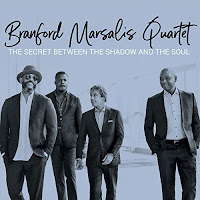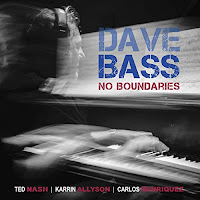Author/critic/jazz
pianist Ted Gioia’s latest book. Music: A Subversive History, is a
close to five-hundred-page, rigorously researched, travelogue through the
history of music and its often subversive origins. If you are a musician, love
music, or are a music-history buff, this is a book that should be on your bookshelf.
Gioia has
written eleven non-fiction books (The History of Jazz, How to Listen to Jazz,
Love Songs: The Hidden History.…) and is a graduate of Stanford and Oxford.
He is a recorded jazz pianist and has established himself as a respected music
historian and writer, as well a social commentator. In the 1980s Gioia helped
develop Stanford’s Jazz Studies Program and served on the faculty alongside
artist-in-residence saxophonist Stan Getz for several years. Between 2007-2010
he manned the successful web music portal and blog jazz.com (where I first worked
for Ted as a contributor) and Gioia has been published in many of this countries
most prestigious periodicals and newspapers (New York Times, Los Angeles Times, Wall Street Journal, Smithsonian, Salon, The Guardian, Los Angels Review of Books, The Atlantic Monthly etc.)
In Music:The Subversive History, Gioia describes the symbiosis between the early
hunter/gatherer and later pastoral societies with the animal world. In these
earliest of connections between human hunters and animal prey, there developed
a ceremonial process that used music to sanctify the hunt, honor the animal
victims for the sustenance they provided and, in some way, ritualized the necessary
brutality of the act of the kill. Music has always been inescapably
connected to violence, but it was also bound to a sacred ritual that demonstarted appreciation. It
is not surprising that the earliest humans created rudimentary instruments from parts of their life-giving prey. The earliest instruments were developed from animal
bones (flutes & mallets), skins (drumheads), and gut (strings), purposefully linking the tribe and its musical expression to the animals and to everyday life
experiences of survival, community and ceremony.
Gioia introduces
readers to a well-studied selection of characters throughout the book-from Pythogoras to Sid Vicious, from Duke Ellington to Elvis Presley, from Beethoven to Bob Dylan. In
some ways these artisans affect the perception and direction of the music of their time.
Gioia postulates that music has two genders- feminine music that concentrates on love,
fertility, sex, trance, magic and unity, and masculine music that centers on
discipline, order, nationalism, violence, camaraderie and maintaining power.
One of
the earliest documented creators of the feminine side of music can be traced
back to the ancient Greek lyrical poet Sappho (630-570 BC), from the island of
Lesbos, who reportedly wrote over 10,000 lines of poetry (only a fraction of which
have been recovered.) Her poems, which were innovative and uniquely explored individual
identity, were presumably sung while accompanied by a lyre (an early string instrument),
and the themes of her poems, that have been documented, centered on family, desire, jealousy and
love. These may well have been the earliest written ‘love’ songs.
 |
| Author Ted Gioia (photo credit unknown) |
By
contrast,Gioia notes that the Greek poet Pindar, who resided in Thebes (518-438 BC), wrote
poems from a strictly masculine point of view. Despite the popularity of Sappho’s
lyrical poetry, certain factions of Greek society were more readily willing to memorialize
the stoic aspects of life, warfare and strength, in their poetry and music. Pindar’s
lyrical poetry, especially his Victory Odes, fit this requirement. These works
were danced to and accompanied by song and lyre to memorialize valiant behavior,
male athleticism, military camaraderie and victories in war. These two approaches to this early
music represent the dichotomy that Gioia emphasizes. The magical connection between
humanity and music through the centuries has always been deployed to promote competing
philosophies to the masses.
Gioia’s musical
journey is thorough and exhaustive. He touches on music in ancient Greece with Pythagoras’
mathematical approach to scientifically defining music as being pivotal. He traces music through Mesopotamia, Egypt, Confucian China and the
Renaissance. He identifies organized religion's influence on music, a role that often twarted bawdy, socially lower class music that was not specifically centered on praise to the diety. He discusses Gregorian
chant and classically composed religious Mass music. Gioia mentions the disruptive effects of
English minstrels and troubadours, the emergence of European tonal Classical music
and even progressive 12 Tone Classical music. In America and across the globe, the author touches
on the development of multiple genres; New Orleans’s jazz, Mississippi blues, Swing Jazz, Be Bop,
Motown, Folk, Soul, The British Rock Invasion, Punk, New Wave, Glam Rock,
Country, Outlaw Rock, Grunge, Hip-Hop, Electronic Dance Music and Rap to name a few.
The book has an
enormous scope spanning over four thousand years of history. Gioia's research is
impressive and backed up by his extensive employment of footnotes and meticulously sourced
information. The sources include sociological and historical works that go far beyond the normal musical references. Having read several of
Gioia’s books, I am always engaged with his research, intrigued by his
contentions, amused by his humor and come away more informed.
Gioia’s work unearths the sociological concept that innovation and change in music
is almost always sourced from the lower economic classes of society. He identifies the restless
common and disenfranchised, the outsiders of society who repeatedly introduce
new music, lyrics and ideas that push the envelop of acceptable social norms at
any given stage in history. This disruptive element occurs
throughout history- the minstrels, the bluesmen, the jazzers, classicists, the folk singers, the rock and rollers, the be-boppers, the punks, the avant garders, the rappers- all face vigorous resistance and sometimes outright censor. Eventually, Gioia points out that no matter what is originally seen in music as outrageous, unharmonious, outside of the
established rules or too disruptive to the existing order, changes are generally
assimilated into the society in some measure and are morphed into a part of the new
standard. In many
cases, the acceptance of change in music is often created by artistic innovation,
spurred by discontent with social injustice (Bob Dylan), personal discontent (Kurt Cobain) or motivated by the simple desire to
make oneself different (David Bowie). But as Gioia points out, these shifts in music are often
diluted, commercialized and shamelessly exploited by shrewd entrepreneurs whose
sole goal is to profit from the artists innovation.
Gioia doesn't shy away from the fight between the
musician and the music business, which has continued to diminish the value of the
musical artist’s compensation. Sadly, modern web-based streaming of music has accelerated
the dilution of the earning power of the artist. If Gioia’s history of music documents anything, it has validated the concept that
music’s inherent appeal is like a powerful aphrodisiac. It attracts listeners, excites,soothes, rallies, mesmerizes, romances, enrages, nationalizes and entertains its audience. it is truly a gift. But the shameless commoditization of the music has predominantly worked against the artist and only for big businesses benefit. It is an unsustainable paradigm for the working musician/
artist and must correct.
It may require a revolution, an organized protest amongst artists, to
unite all musicians to a common goal, value and equity. Cleary music offers numerous societal
values far beyond purely economic factors, but if music becomes only about
the money, then the real living, breathing, innovating and innovating musicians, who
will not be able to sustain themselves under the current economic policies may go extinct. The prospect of the future music being manufactured by cheaper, algorithmically driven, artificial intelligence developed,
Pythagorean math-generated music machines will come to pass and music will have lost its most important element, humanity. I for one hope that I will never live to see that day.


















































